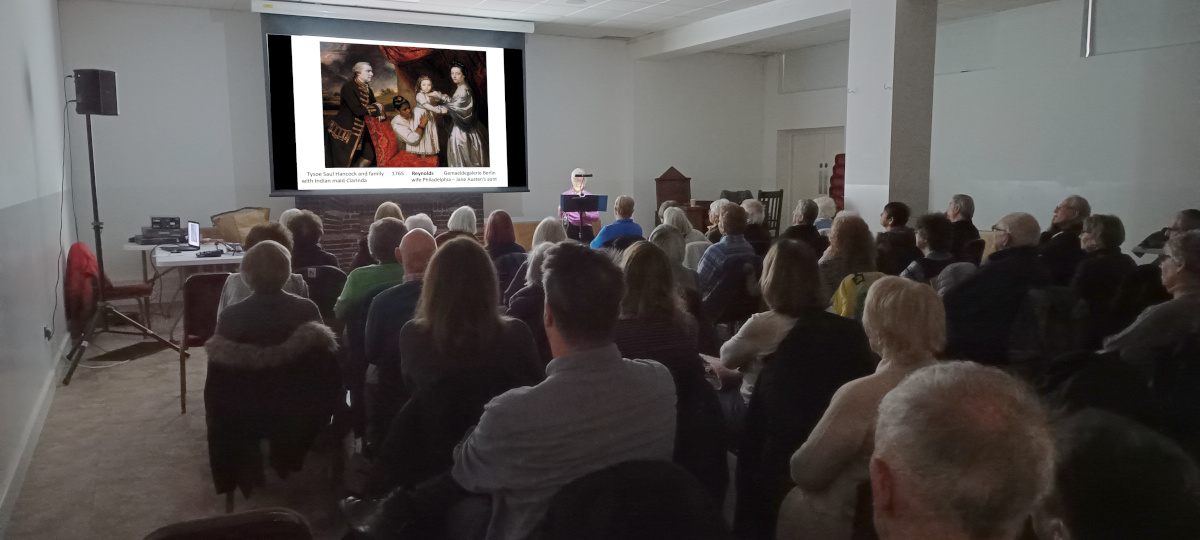Our final lecture on British Art of 18th Century took place on Friday 17 November 2023, with Jennifer acting once again as our guide to what was going on. We started (above) with the Hancock family as an illustration of the difference between servitude and slavery, and were introduced to the lady on the right, the aunt of the author Jane Austen! The hub for this adventure in art and travel round the world was the Greenwich Maritime Museum, formerly known as the Greenwich Royal Naval College, the Royal Hospital School, the Royal Naval Asylum, and before that as the Queens House and as the Tudor Palace of Placentia.
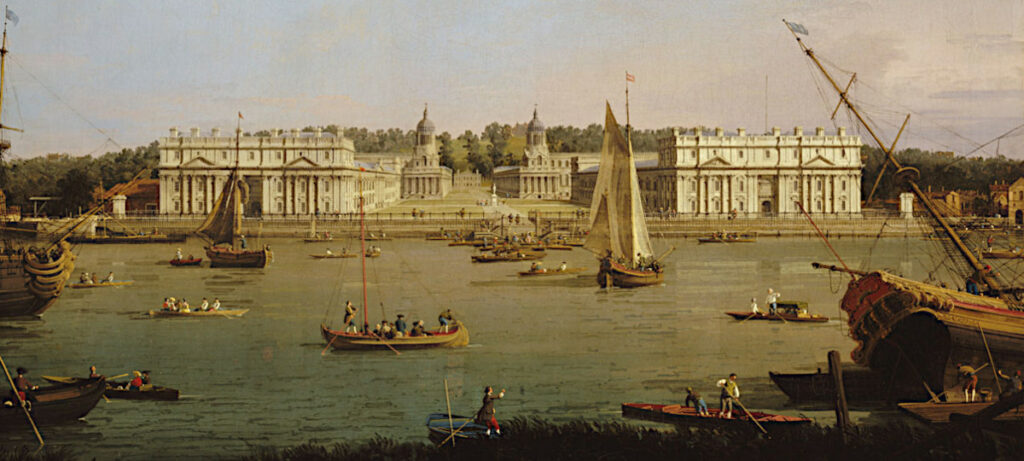
The palace was originally constructed by Humphrey, the brother of Henry V, in 1443, but was extensively altered for Queen Anne of Denmark, wife of James VI of Scotland and James I of England by the architect Inigo Jones. There is much nautical art to be found there, including an exhibition at the time of writing of the Dutch Artists we had studied earlier in 2023. Greenwich was also a major port of embarkation for the discovery of the world, and Jennifer used to three voyages of Captain James Cook as the vehicle that took us round the globe.
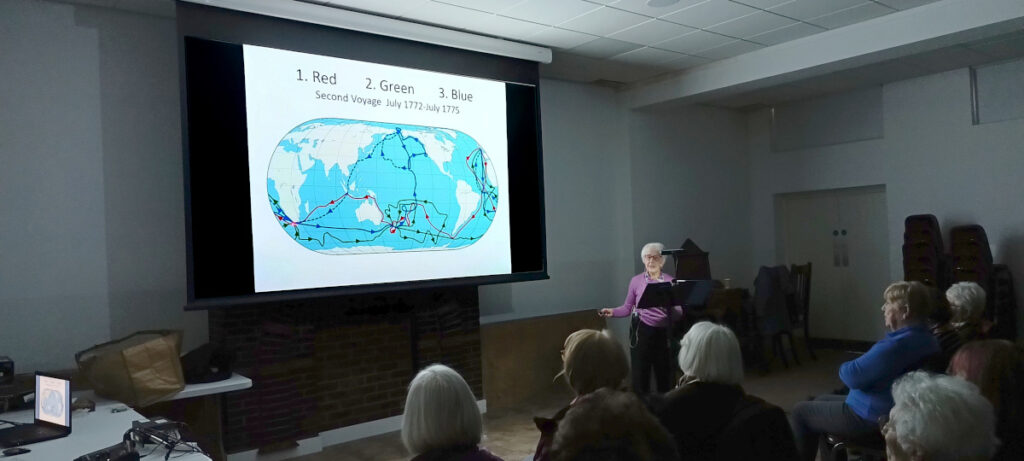
We investigated the Florilegium of Joseph Banks, with the watercolours of Sydney Parkinson and the published engravings. The skin of a Kangaroo (or Kongorou) had been brought back to the UK and later stuffed and then painted by George Stubbs. We also examined his portrait of a large Dog – both painted in 1772. Much of the scenery of the South Pacific and the attempt to find the North West Passage in the North Pacific had been recorded by 18th Century artist William Hodges, who had taken Banks’s place on the second voyage over a disagreement about the amount of artist’s equipment required. The second voyage had returned with O Mai, a native of the South Pacific who had quickly risen in 18th Century Society in London, even being painted by Sir Joshua Reynolds.
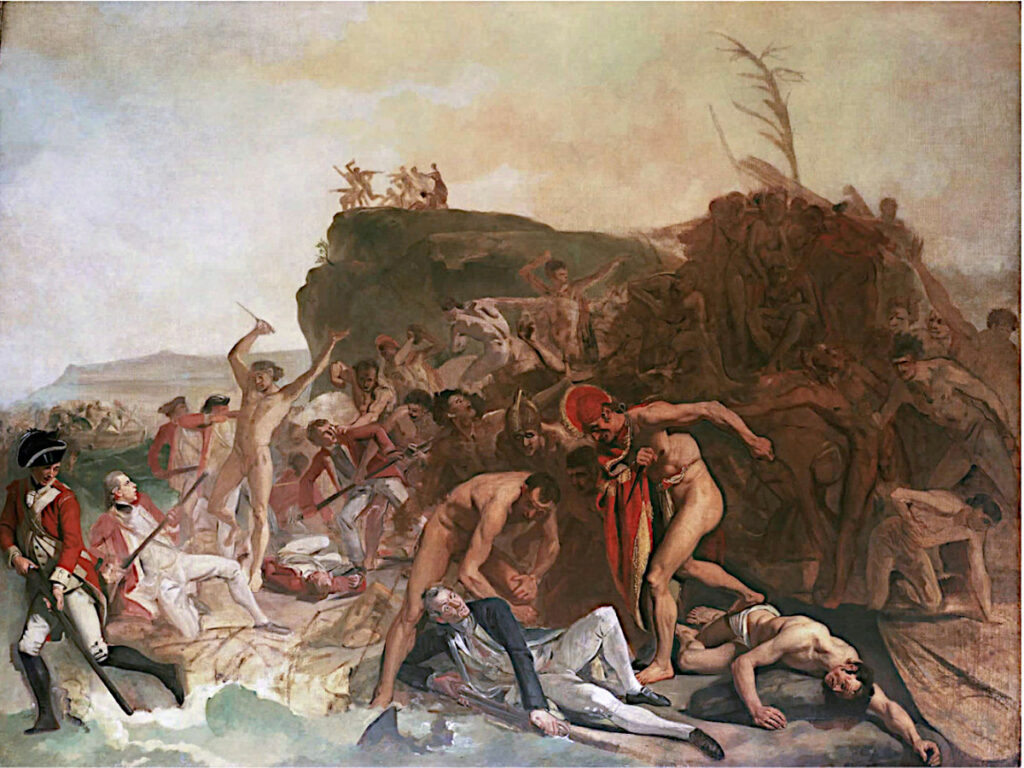
The third voyage had ostensibly been organised so that O Mai could return home, but that voyage had also seen the death of Captain James Cook in 1779 in Hawaii, as portrayed above by Johan Zoffany.
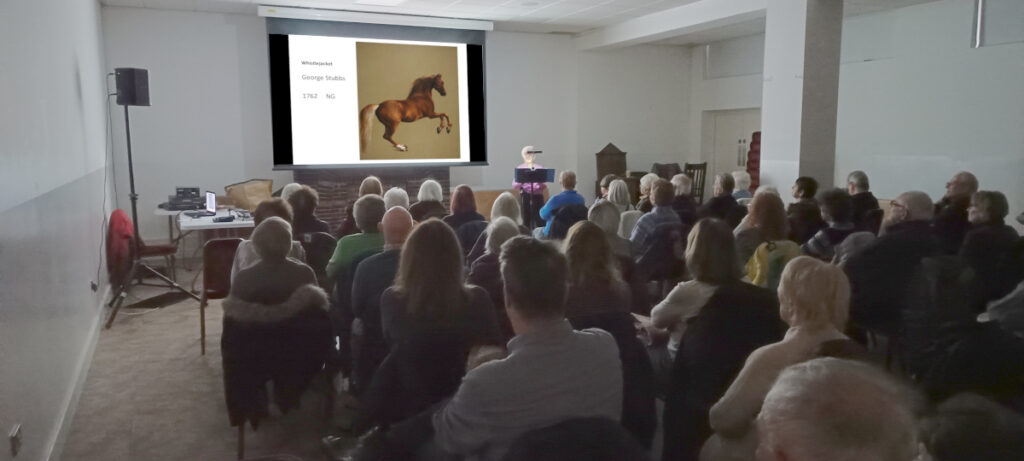
After the Kangaroo and the Dog, Jennifer took us through the career of George Stubbs, introducing his famous horse paintings, including Whistlejacket, currently in the National Gallery. Stubbs had painted many race horses, including Gimcrack and Otho, as well as natural groups of horses as in Mares and Foals and River Landscape. He also painted agricultural workers collecting hay and reaping the harvest. He had also painted Mrs Musters (as had Reynolds) but there had been a number of alterations to the original painting in order to please Mr Musters who had concerns about the faithfulness of his wife! Stubbs had also painted his favourite dogs, as had Gainsborough and Hogarth.
And with that, our tour of British Art and Artists of 18th Century came to a close. This has been a most rewarding period to study, and Jennifer has guided us through it with her infectious enthusiasm and humour, based on her solid academic knowledge. We are all looking forward to another course in the Spring of 2024.

